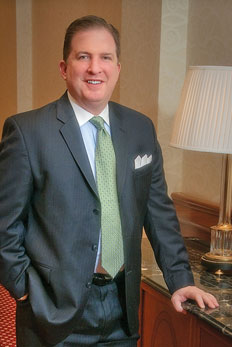Tim Searcy is CEO of the Indianapolis-based American Teleservices Association (ATA), a trade organization that represents more than 4,000 contact centers. Site Selection recently asked him to comment on issues facing the contact center sector.
SITE SELECTION: What are some of the general trends you are observing in the contact center industry?
TIM SEARCY: Outsourcing. Labor choices continue to include off-shoring, near-shoring, automated voice, at-home agents and traditional contact centers. However, the increased blend of these labor sources based upon type of application or customer served has changed dramatically.
Data has always been crucial to the contact center, but now the use of more sophisticated call routing based upon more than skills, through tools like RAMP [Real-Time Analytics Matching Platform] and SATMAP [a technology for matching callers to agents], has dramatically changed the way companies can connect with customers.
Privacy has become the top compliance and regulatory priority. For the first time, we are seeing industry move more rapidly than government to attempt to secure consumer data in a much stricter way. PCI [Payment Card Industry] standards and other industry-imposed privacy standards are creating more confidence in Washington that industry can safeguard itself. Additionally, the ATA’s Self Regulatory Organization (ATA-SRO) has received a strong vote of confidence from the FTC which has increased adoption of this third-party objective auditing of compliance with federal and state laws.
SS: What are the current contact center location trends in North America and why?
SEARCY:The biggest trend in locations is that organizations have moved out of brick and mortar and more heavily into at-home agents. Otherwise, the trends are all about labor and incentives. Organizations seek educated and available labor in markets in which the government provides economic incentives to locate.
SS: What are the global location trends?
SEARCY: Without a doubt, we continue to see a strong push for near-shore contact centers in CALA [Central America/Latin America], Mexico and Canadian locations. This has a lot to do with proximity, plentiful bilingual labor and favorable government treatment. Certainly the Philippines and India retain contact centers, but the growth as a percentage of increase is coming in these other areas.
SS: What is new in terms of contact center facilities?
SEARCY: Honestly, not that much. Flat screens, natural light, improved bi-aural headsets and more applications at the desktop are continuations of trends that have been going on for some time.
SS: Is social media becoming a big factor in contact center operations?
SEARCY: Absolutely. In both managing representatives as well as applications with customers, social media is the topic of interest. The curiosity is how to incorporate this channel into other channels and manage the low volume of traffic now. Everyone knows that traffic will increase, and organizations want to be prepared by getting protocols in place now.
SS: What are the biggest challenges facing the contact center industry today?
SEARCY: Our challenges are the same as they have been: Keep the customer at the center of what we do. It is still too easy to get caught up in short-term economics and forego great treatment of customers. Technology can only take us so far. We need to keep human design and delivery of solutions at the heart of what we do.
Secondly, brand consistency across integrated and integrating channels of social media, live operator, IVR and chat has not been perfected. Integration will be the watchword for the next few years as organizations sort out what it means to “talk to customers when they want, how they want and by the channel they want.”
Earlier this week, after the above interview was conducted, ACCENT Marketing Services, a member of the MDC Partners Network and provider of customer engagement and performance marketing solutions, announced the appointment of Tim Searcy as the company’s new chief executive officer. Robert Kobek will serve as Interim President of the ATA. -Ed.
